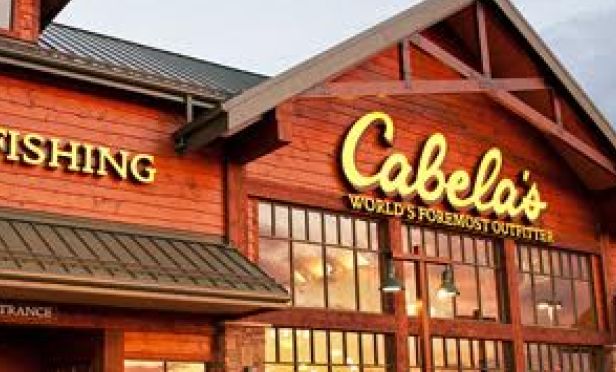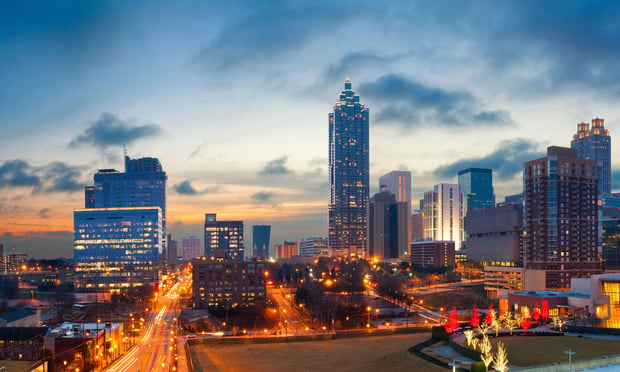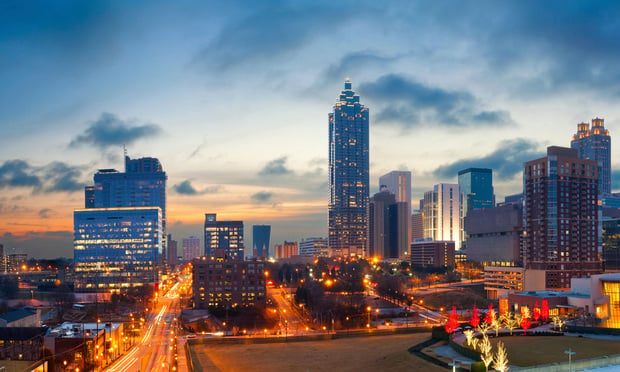
ATLANTA—The rise of e-commerce is undeniable. But omni-channel is the present and future reality. So says Terry Montesi, CEO of Trademark Property.
Over the past 24 years, Trademark has invested in, developed or redeveloped 11.5 million square feet of retail property worth in excess of $2.1 billion. GlobeSt.com caught up with Montesi to get his insights in part one of this exclusive interview.
GlobeSt.com: What is your overarching view of the retail commercial real estate scene in 2017?
Montesi: The retail real estate industry is experiencing a rapid state of change. E-commerce has caused everyone to pause, consider how they allocate resources and put many of their brick-and-mortar investments on hold.
In 2017, we'll continue to see online retailers venturing into brick-and-mortar, and brick-and-mortar retailers upping their game online. Omni-channel is where it's at, and retailers and investors are embracing this hybrid model.
Retailers are using stores for distribution, pick-ups and returns. For many types of retail—fashion, food, et cetera—people want to see it, touch it, before they make a purchase. Because of this, the physical store should remain at the core of retailers' omni-channel strategies.
GlobeSt.com: What impact will urbanization have on the retail real estate industry in 2017? And what are the implications?
Montesi: Urbanization is not a fad, nor is people's desire to live, work, play, dine and stay in high energy, interesting urban places with great public spaces. This idea rings true across all demographics and generations. Urban development is becoming more integrated, dense and energetic is currently a major trend that will continue in 2017.
At Trademark, we are creating retail ground planes that are public space-centric, and we're finding that hotel and multifamily developers are not only very interested in being part of those projects, but are also willing to forecast higher rents because of the mixed-use environment. Similarly, the office projects that we develop as part of our mixed-use projects are either achieving higher rents or higher leasing velocity than competitors.
Find out how mall retailers are repositioning themselves in my recent column.

ATLANTA—The rise of e-commerce is undeniable. But omni-channel is the present and future reality. So says Terry Montesi, CEO of Trademark Property.
Over the past 24 years, Trademark has invested in, developed or redeveloped 11.5 million square feet of retail property worth in excess of $2.1 billion. GlobeSt.com caught up with Montesi to get his insights in part one of this exclusive interview.
GlobeSt.com: What is your overarching view of the retail commercial real estate scene in 2017?
Montesi: The retail real estate industry is experiencing a rapid state of change. E-commerce has caused everyone to pause, consider how they allocate resources and put many of their brick-and-mortar investments on hold.
In 2017, we'll continue to see online retailers venturing into brick-and-mortar, and brick-and-mortar retailers upping their game online. Omni-channel is where it's at, and retailers and investors are embracing this hybrid model.
Retailers are using stores for distribution, pick-ups and returns. For many types of retail—fashion, food, et cetera—people want to see it, touch it, before they make a purchase. Because of this, the physical store should remain at the core of retailers' omni-channel strategies.
GlobeSt.com: What impact will urbanization have on the retail real estate industry in 2017? And what are the implications?
Montesi: Urbanization is not a fad, nor is people's desire to live, work, play, dine and stay in high energy, interesting urban places with great public spaces. This idea rings true across all demographics and generations. Urban development is becoming more integrated, dense and energetic is currently a major trend that will continue in 2017.
At Trademark, we are creating retail ground planes that are public space-centric, and we're finding that hotel and multifamily developers are not only very interested in being part of those projects, but are also willing to forecast higher rents because of the mixed-use environment. Similarly, the office projects that we develop as part of our mixed-use projects are either achieving higher rents or higher leasing velocity than competitors.
Find out how mall retailers are repositioning themselves in my recent column.
Want to continue reading?
Become a Free ALM Digital Reader.
Once you are an ALM Digital Member, you’ll receive:
- Breaking commercial real estate news and analysis, on-site and via our newsletters and custom alerts
- Educational webcasts, white papers, and ebooks from industry thought leaders
- Critical coverage of the property casualty insurance and financial advisory markets on our other ALM sites, PropertyCasualty360 and ThinkAdvisor
Already have an account? Sign In Now
*May exclude premium content© 2025 ALM Global, LLC, All Rights Reserved. Request academic re-use from www.copyright.com. All other uses, submit a request to [email protected]. For more information visit Asset & Logo Licensing.








